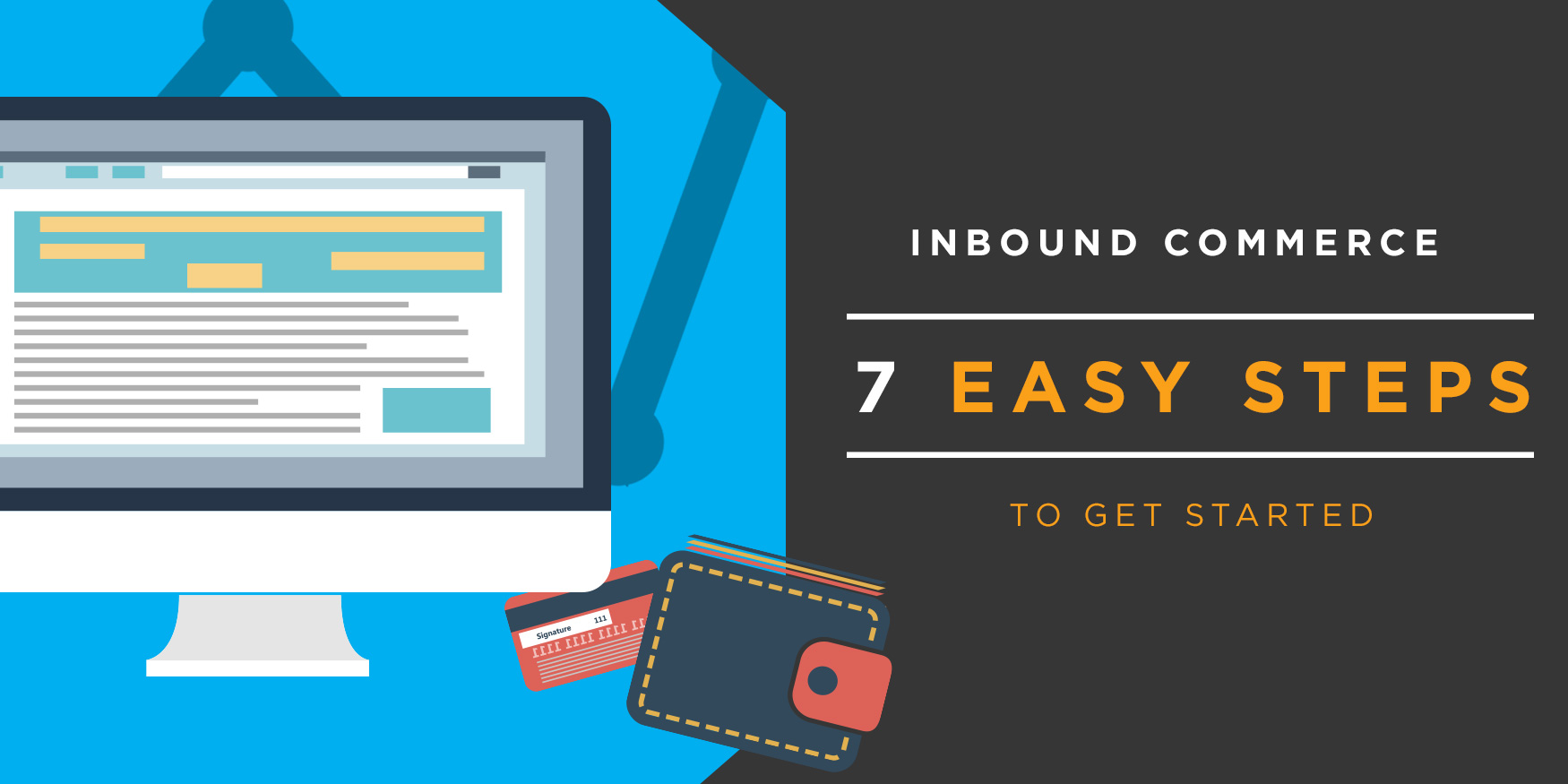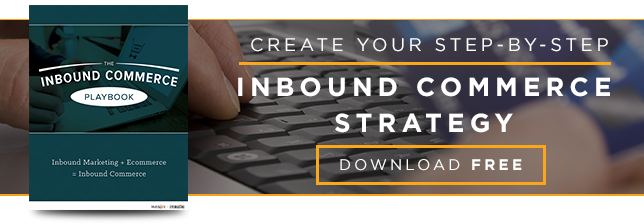 In today’s bring your own device (BYOD) World, the drive is on to find new ways of connecting with your customers and leading them to your door. Making your eCommerce site a beacon that draws customers to it, from whatever device they are on, is what Inbound Commerce is all about. The goal is to have all the components of your online marketplace work together to reach your target market and convert them to buyers. What follows are 7 steps to do just that.
In today’s bring your own device (BYOD) World, the drive is on to find new ways of connecting with your customers and leading them to your door. Making your eCommerce site a beacon that draws customers to it, from whatever device they are on, is what Inbound Commerce is all about. The goal is to have all the components of your online marketplace work together to reach your target market and convert them to buyers. What follows are 7 steps to do just that.
Inbound Commerce: 7 Easy Steps to Get Started
1. Identify Your Purpose
This first step is the same for every business. You can’t truly succeed unless you know what your business exists to do? What do you offer that no one else can? Is it the products you offer? Is it how you offer them? Is it how you treat your customers? In other words, how does your business stand out from your competition?
If you have not yet put down into words what your mission as a business is, this is the time to do it. Communicating your value to potential customers can’t happen until you know what that value is. This, and knowing who your primary customer demographic is are the foundational components of any Inbound Commerce campaign. Which leads us to…
2. Speak to Your Audience
If you haven’t yet learned about buyer personas, it's a must. Once you know your buyer persona, you can create content that relates to them. This is where keywords have far more impact than just raising your search position. When you know what they are searching for you can create content around it. Think of it as a conversation you are having with your customers. What do they want to know that you are ideally suited to inform them about?
While it is important that your content have substance, you also want it to look good as well. Keep your paragraphs short and utilize bold and clear subheadings, as well as bullet points, to get your message across. Don’t forget to use images as well. Blog posts with images get read more often than those without them. If your post looks good, people will read it and share it more than another post on the same topic with plain formatting.
Always keep in mind that the primary goal of your content is to get your potential buyer to engage with you. Add relevant calls to action (CTAs) to all posts and pages. Whether it’s a mailing list, ebook or survey, getting contact info allows you to reach out to these people and take them further on the buyer’s journey with your brand.
3. Solve Problems
Anyone looking for information online is trying to find a solution for a question/problem they have. In every piece of content that you produce, your ultimate goal is to answer those questions and/or find a solution to their problem. Having developed your buyer persona(s), you have already determined what your target customer’s pain points are; now create content that addresses them.
SEE ALSO: HOW TO SET YOUR ECOMMERCE BUSINESS APART FROM THE COMPETITION
Create this content in a way that speaks to them as well. Do they hip hop across the social media landscape? Their quick attention spans will be much more receptive to visuals and infographics that they can absorb more readily. Maybe they require more data and facts that allow them to feel more comfortable accepting you as an expert in your niche. Creating a voice that they can hear is just as important as the words you write. It’s all about building a community of customers who connect with what your brand represents.
4. Build Community
The goal is to create an online presence that harmoniously works together to attract your buyers and gives them reason to trust you and want to buy from you. In order to do this, you need to focus on the 3 C’s, commerce, content, community. In order for your commerce to succeed, you need to build a loyal community, attracting them with valuable, informative content.
Not every piece of content will knock it out of the park, but if you consistently publish content, you not only have more opportunities to show up in searches, you create more chances for inbound links and more potential for your pieces to be shared. This grows your community, which in turn adds social proof that you are a trusted resource. Consider asking your followers for content as well. User generated content adds to your social proof and adds other voices to your content strategy.
5. Realign/Evaluate/Analyze
As you build your Inbound Commerce strategy, remember to take the time to analyze your progress and see if you are meeting your goals. In the Inbound Commerce world, there are two things that are never complete: your website and your buyer personas. These are ever-evolving entities that you need to be mindful of you if you want remain competitive in the fiercely competitive online marketplace.
Track your page views and how long they are spending on the page. Which posts are sticky and which ones are people leaving from as soon as they enter? What are the social share numbers for your posts? By seeing which ones are shared the most, you get a real world sense of which topics you write about that are resonating with your buyer persona.
6. Go Mobile
As mentioned, we have entered a BYOD world and mobile is at the heart of that. Different screens call for different approaches. Mobile responsive design is a must, and taking into account what people are looking to do on those screens is crucial as well.
To satisfy the needs of your mobile shoppers you need to think about the functional features that these users care about. Delivery status, real-time notifications, click-to-call, maps, and product information tailored to the screen they’re looking at are just a few of the factors you should be addressing to make sure the shopping experience is as intuitive and informative as possible for those shopping on the go.
Good user experience (UX) ensures users can interact with your brand effectively. Your sales will grow if you ensure that product availability, promotional strategies, and brand experience are consistent across all channels — whether online, in-store, or on a mobile device.
7. Automate
Manage your inbound commerce strategy and automate many of the processes. HubSpot does the best job in automating processes throughout the marketing funnel.
From determining your marketing goals to building automated workflows that support those goals, Hubspot gives you the capability to direct your campaign and keep focused on nurturing your customers. You can automate workflows for every aspect of your buyer’s journey. Keeping them connected with personalized messages whether they’re at their inbox or on your site, allowing you to keep your messaging consistent and your inbound marketing efforts manageable and tied to analytics that help you monitor their effectiveness.

